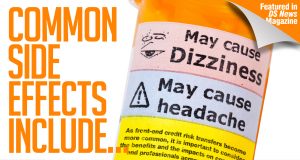An FHFA report crunched the numbers since the GSEs initiated their CRT programs in 2013, and here’s what it revealed.
Read More »The Future of Credit Risk Transfers
Rising interest rates and declining volumes leave the GSEs with little room to expand their credit risk transfer transactions. However, CRTs may have room to grow elsewhere in the market.
Read More »Redirecting Default Risk Away From Taxpayers
Two industry experts talk GSEs, CRTs, and guarantee fees and why shifting mortgage default risk from taxpayers to investors is a very good thing, including helping shield taxpayers from a dire financial crisis more onerous than ’08.
Read More »GSE Credit Risk Transfer Loss Expectations Trend Lower
Fitch Ratings has released a new installment of its GSE Credit Risk Transfer (CRT) Loss Projections Report, which is published every six months, in January and June. The report “details Fitch Ratings’ projections for future credit events and losses on ...
Read More »Freddie Mac Perspectives Blog: G-Fees and CRT
In a Freddie Mac Perspectives blog, Kevin Palmer, SVP of Single-Family Credit Risk Transfer, explained how credit risk transfers and Guarantee fees have much more in common that one might think—one gives Freddie Mac significant insight into the other.
Read More »Freddie Mac Speaks: G-Fees and CRT
Kevin Palmer, SVP of Single-Family Credit Risk Transfer at Freddie Mac, on how credit risk transfers are indicating whether Freddie's Guarantee fees are in line with what the private market would charge.
Read More »GSEs Transfer Billions in Mortgage Risk
Fannie Mae and Freddie Mac have transferred billions in mortgage credit risk this year. But how much exactly have they moved?
Read More »Side Effects Include…
Credit risk transfer (CRT) or sharing is the process in which the government-sponsored enterprises bundle up the mortgages they buy from lenders and sell a portion of the risk to private investors. Instead of the GSEs shouldering the loan risk alone, selected investors help offset any potential risk from loan defaults. CRT began as a test in 2012 and is now quickly ramping up as investor interest and governmental oversight grows. Governmental oversight makes sense—we don’t want another 2007. But why are more investors becoming so interested in CRT?
Read More »Freddie Mac: Offloading More Credit Risk
Freddie Mac's single-family credit risk transfer programs had a "very good year," in 2016, according to one executive.
Read More »What is the Future of Freddie Mac’s Risk Transfer Policy?
A look back at Freddie Mac's credit risk transferring for this year as well as what the GSE has in store for 2017.
Read More »
 DSNews The homepage of the servicing industry
DSNews The homepage of the servicing industry




